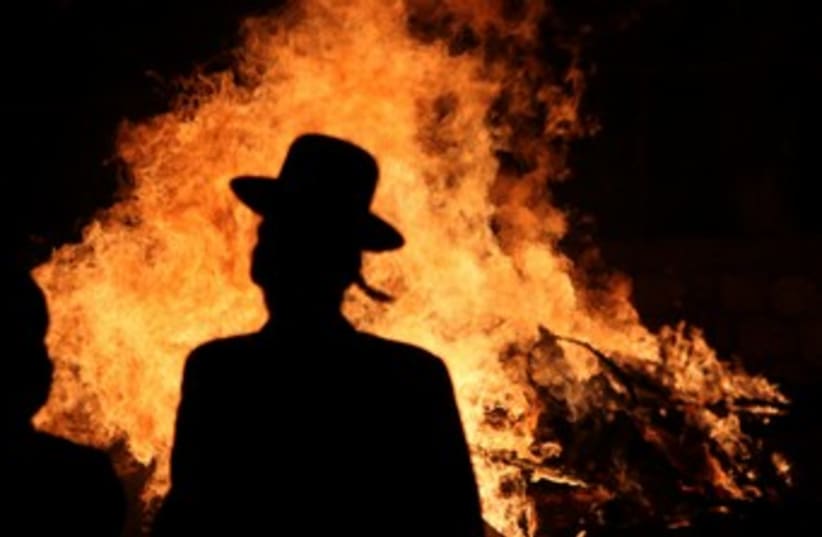The Torah commands us to count fifty days between Passover and Shavuot, but there is no mention in the Torah of the mourning practices widely observed today (prohibitions on haircutting, buying and wearing new clothes, and marrying), nor is there any special role accorded to the thirty-third day of the Omer. Even in ancient times this period was regarded as significant because "the world is in distress from Passover to Shavuot on account of the grain and the trees"; but following the destruction of the Temple, the loss of the Jewish homeland and its holy center of worship became additional sources of sadness.
Only after the Bar Kochba revolt did these days become national days of mourning for the heroes who had died in the war against Rome. The Talmud (Yevamot 62b) tells of a plague that afflicted Rabbi Akiva's students and ended on the thirty-third day. Some hold that Rabbi Akiva's students were active in the Bar Kochba revolt (132-135 CE), a response to the Roman empire's oppression of the Jewish people and curtailment of their religious practice. The primary expression of mourning was the prohibition on marriage during this period.
Tradition holds that there was a turning point during the revolt in which the Jews began to gain the upper hand. Coins discovered at archaeological sites bearing the inscription "Shimon" on one side and "for the liberation of Jerusalem" on the other hand attest that Bar Kochba succeeded, for a while, in conquering Jerusalem. This interim victory is said to have taken place on the thirty-third day of the Omer.
And so the mourning practices came to an end on a day that became a festival of sorts, in which, somewhat surprisingly, the Jewish youth of Europe took to going out into the fields and forests to celebrate and to play military games with bows and arrows in memory of the victory of Bar Kochba and as a sign of Jewish heroism.
There are those who claim, with legitimate grounds, that the origin of the mourning practices associated with the Omer can be traced back to the Crusades, a period of riots and persecution. The First Crusade (1096-1099), for instance, began with the slaughter of Jews, primarily those living along the Rhine river, in communities such as Speyer, Worms, and Mainz.
A significant development in the history of this holiday is associated with Rabbi Isaac Luria (the Ari, 1535-1572), one of the great Kabbalists, who saw this day as a festival commemorating the restoration of Torah learning by means of Rabbi Akiva's surviving students, who saved Torah from oblivion. The most famous of these students, Rabbi Shimon bar Yohai, who is regarded in Kabbalistic tradition as the author of the Zohar, the foundational text of Jewish mysticism, revealed hidden secrets to his students before his death on the thirty-third day of the Omer. The Zohar tells of a fire that was lit when the Ari died, and so it is customary to make a pilgrimage to the Ari's grave in Meron and to celebrate with flames and bonfires. Although there are only scant references to Bar Kochba in Jewish sources, some of which are negative on account of the deleterious implications of the revolt for the residents of Judea, the Zionist movement nonetheless accorded him heroic status.
In addition to the pilgrimage to Meron and the celebrations which draw hundreds of people to the grave of Rabbi Shimon Bar Yohai, who passed away, according to tradition, on the thirty-third day of the Omer, it is also customary among secular Jews to light bonfires on the eve of this day, particularly among children and teens -- a sort of renewal of the ancient custom of kindling torches to proclaim victory. In modern Israeli culture many songs were written and stories were told about the legendary heroism and extraordinary physical strength of Bar Kochba. And so Bar Kochba, who was a marginal figure for most of Jewish history, became an integral part of the Israeli curriculum, from preschool on.
Everyone who, like me, was educated in the Israeli school system learned to sing Levin Kipnis' song about Bar Kochba:
There was a man in Israel whose name was Bar Kochba,
He was young and tall, and his eyes shone.
The whole nation loved him; he was a hero.
Professor Aliza Shenhar is the provost of the Max Stern Yezreel Valley College.
